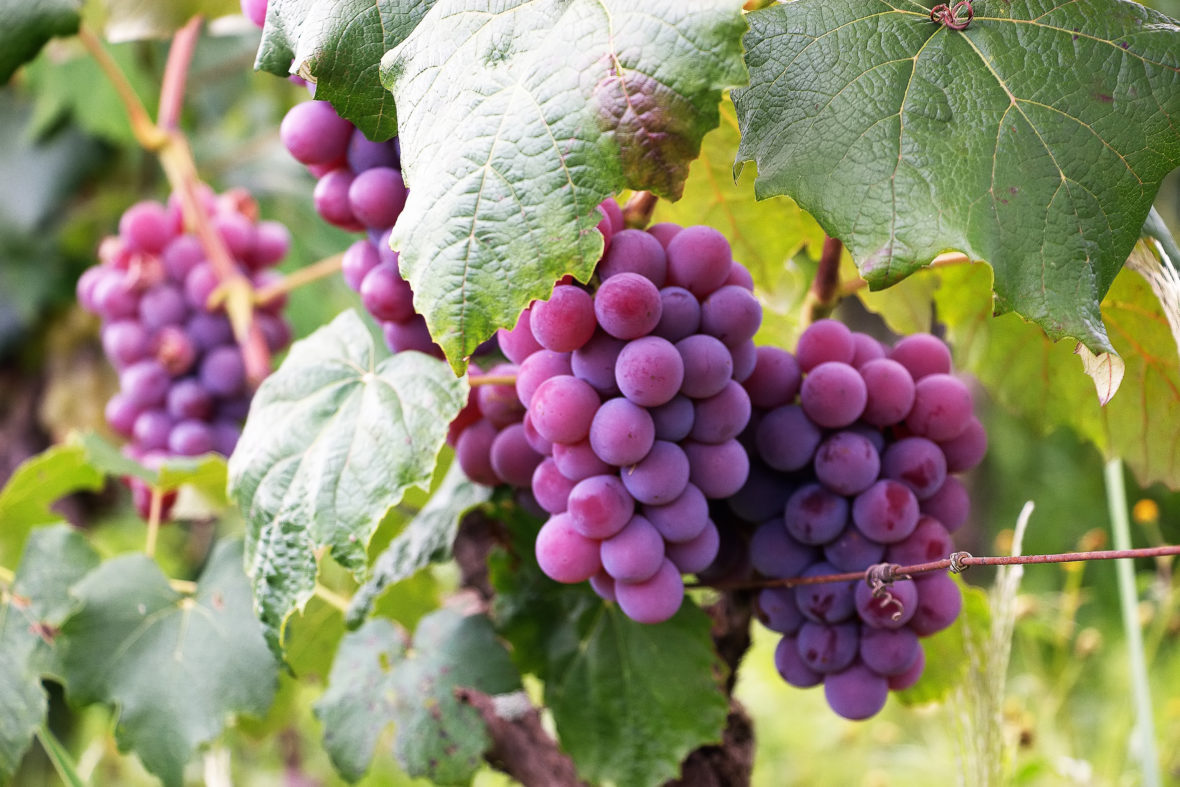Grapes are a fruit, botanically a berry, of the deciduous woody vines of the flowering plant genus Vitis. They can be eaten fresh or they can be used for making wine, jam, juicy, jelly, grape seed extract, raisins, vinegar and grape seed oil. Take a look below for 28 more interesting and fascinating facts about grapes.
1. Grapes are a non-climacteric type of fruit that generally grows in clusters.
2. The cultivation of the domesticated grape began between 6,000 to 8,000 years ago in the Near East.
3. Yeast, one of the earliest domesticated microorganisms, occurs naturally on the skins of grapes, leading to the discovery of alcoholic drinks such as wine.
4. The earliest archaeological evidence for a dominant position of wine-making in human cultures dates from 8,000 years ago in Georgia.

5. Ancient Egyptian hieroglyphics record the cultivation of purple grapes, and history shows that the ancient Greeks, Phoenicians and Romans grew purple grapes for both eating and wine production.
6. In North America, native grapes belonging to various species of the Vitis genus proliferated in the wild across the continent, and were a part of the diet of many Native Americans.
7. There are 60 species and around 8,000 varieties of grapes that can be found throughout the world today.
8. Grapes develop on the vine that can reach a length of 50 feet. One grape vine usually produces 40 clusters of grapes.
9. The leaves of grape vines are large, green and partially lobed. They have toothed edges.
10. Grape vines develop snake like tendrils. They support the growth of the plant by binding nearby objects and structures.
11. Grape vines produce small, green flowers that are arranged in clusters. The flowers have both male, stamen, and female, pistil, reproductive organs and they’re able to self pollinate.

12. The production of grapes is a very large, well developed and popular business worldwide. About 25 million acres of land on the planet are covered with vineyards. 72 million tons of grapes are produced each year. 71% of produced grapes are used in the manufacture of wines, 27% are sold as fresh fruit and 2% are turned into raisins.
13. It takes 2.5 pounds of grapes to make a single bottle of wine.
14. Grapes are made of 80% water and 20% dietary fibers. It’s a rich source of vitamins C, K and B. They’re also an excellent source of calcium, phosphorus, potassium and magnesium.
15. Latest scientific studies suggest that juice extracted from the purple-colored type of grape known as Concord, can prevent the development of breast cancer.
16. Grape seeds contain oils which are used int he cosmetic industry for making skin-care products.

17. The average person eats about 3.6 kilograms of grapes per year.
18. The oldest grape vine in the United States is a 400 year old Scuppernong vine in North Carolina.
19. Christians have traditionally used wine during worship services as a means of remembering the blood of Jesus Christ which was shed for the remission of sins.
20. Christians who oppose drinking alcohol sometimes use grape juice or water as the “cup” or “wine” in the Lord’s Supper.
21. The Code of Canon Law of the Catholic Church, Canon 924 states that the wine used during celebrations must be natural, made from grapes of the vine, and not corrupt.
22. In rare circumstances, a priest can obtain special permission to use grape juice for the consecration; however, this usually requires a very good reason, such as the personal health of the priest.
23. Although alcohol is permitted in Judaism, grape juice is sometimes used as an alternative for kiddush on Shabbat and Jewish holidays, and it has the same blessing as wine.
24. In the Bible, grapes are first mentioned when Noah grows them on his farm in Genesis 9:20-21.

25. Grapes were significant to both the Greeks and Romans, and their god of agriculture, Dionysus, was linked to grapes and wine, being frequently portrayed with grape leaves on his head.
26. In Christian art, grapes often represent the blood of Christ, such as the grape leaves in Caravaggio’s John the Baptist.
27. Grape therapy, also known as ampelotherapy, is a form of naturopathic medicine, or alternative medicine, that involves heavy consumption of grapes, including seeds, and parts of the vine, including leaves.
28. The consumption of grapes and raising is very dangerous for dogs. Their toxicity to dogs can cause them to develop acute renal failure with anuria and it can be fatal.





2 Comments
Pingback:
March 5, 2018 at 2:28 pmPingback:
March 6, 2018 at 11:48 am